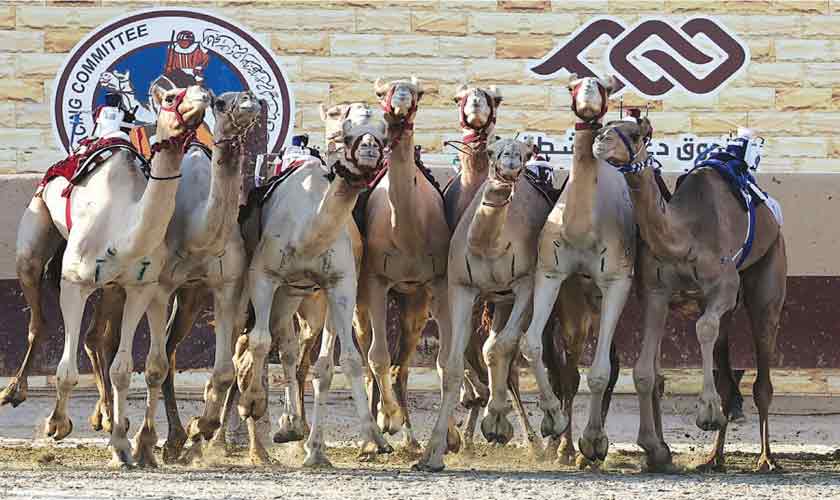[ad_1]
sIn a white all-terrain truck, Nasser Al-Marri watched a remote-controlled camel race across the Qatar desert and insisted his sport makes football pale in comparison.
But as Qatar prepares for the arrival of more than a million World Cup fans, the camel racing track in Al Shahaniya is hoping to get a boost from the world’s most popular pastime.
said Mari, 23, as he sat in a cart with three other camel trainers on the road, 40 kilometers (25 miles) east of the capital, Doha.
Driving parallel to the track, they control young robot jockeys on camels and make them pick up speed – a recent innovation to replace the child jockeys who are used to performing the dangerous task.
“It is the number one sport in the Gulf,” Al-Marri said, as the four young men – like most of the country – eagerly await the World Cup finals, which kick off on November 20.
Abdullah Hafez, 21 – who said he would support the Netherlands – hopes many football fans will get to the track to “discover the sport of our ancestors”.
In the back seat of Al Marri’s car, Ahmed Ali, 18, showed a video clip on his phone of Brazilian star Neymar visiting Al Shahania with his Paris Saint-Germain team in 2019 for a special race in their honor.
Ali said, “I hope that Neymar will return with the rest of his Brazilian colleagues and that other teams will come to Al Shahania to discover our national sport and its festive atmosphere.”
In a small café near the track, Ali al-Marri, 66, sipping traditional Arabic coffee, told AFP he went camel racing “before Doha became what it is today.”
He recalled the past times when there were no racetracks, and competitions were not divided into categories by size, age and gender.
The jockeys simply raced in parks and gardens near Doha.
Al-Marri said that his father passed this passion on to him, and I am now retired as well.
Aside from training the animals, the ‘destroyer’ is also responsible for ensuring the health and welfare of the camels.
“It’s an expensive sport, but beauty is my whole life,” Mary said.
When the race was over, Abu Hussein, a 35-year-old Sudanese man, and other foreign workers took the motorized riders off their camels and guided the animals to one of the many stables in Al Shahaniya.
The owner of the property Abdullah Hafez, 52 years old, said that camel racing requires money, effort and perseverance.
He explained that the price of a camel starts at about $10,000, and training and care costs at least $1,500 a month.
But for the winning camel, “there is no limit to its price, which can exceed one million dollars.”
Bets are forbidden in Islamic countries, but knights play for valuable prizes usually offered by the ruling family that sponsors this traditional sport.
A $100,000 luxury car is a common prize, Hafez said, but for some national or regional races it can be “tens to 200 or even more.”
Until two decades ago, young children brought from poor countries were the knights. The thinner and lighter they are, the better their chances.
But the Gulf countries banned this practice, and succumbed to international pressure, after fatal accidents and violations by some parents who deprived their children of food so that they would not gain weight.
Now robots are applying whip slits.
Hafez’s nephew, Mohammed, 27, a former football player who joined his uncle in Al-Shahaniya, said the sport requires vigorous training and “great attention”.
Unlike some coaches, the retired Marri said, “Football does not interest me.”
“The only sport for me is racing, and when I am next to my camel I feel like the whole world is mine.” ———— France Press agency
[ad_2]
Source link

